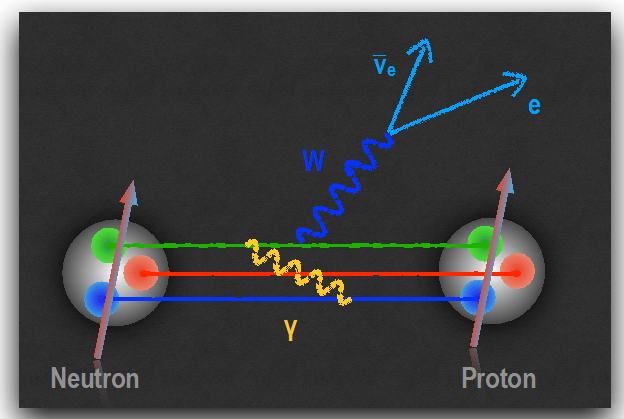Scientists have observed a rare new radioactive decay mode for the first time. In this decay mode, oxygen-13 (with eight protons and five neutrons) decays by breaking into three helium nuclei (an atom without the surrounding electrons), a proton, and a positron (the antimatter version of an electron) following beta decay. The findings expand scientific knowledge of decay processes and the properties of the nucleus before the decay.
Tag: beta decay
Precision Nuclear Physics in Indium-115 Beta Decay Spectrum using Cryogenic Detectors
Nuclei such as Indium-115 (In-115) are extremely long lived, with half-lives of more than 100 billion years. These nuclei allow scientists to probe elusive high energy nuclear states. In a new study, scientists theoretically determined the electron energy spectrum from decays of In-115 based on data collected in a specialized detector. The scientists also performed the world’s most precise measurement of the half-life of In-115.

New Insights on the Interplay of Electromagnetism and the Weak Nuclear Force
Outside atomic nuclei, neutrons are unstable, disintegrating in about fifteen minutes due to the weak nuclear force to leave behind a proton, an electron, and an antineutrino. New research identified a shift in the strength with which a spinning neutron experiences the weak nuclear force, due to emission and absorption of photons and pions. The finding impacts high precision searches of new, beyond the Standard Model interactions in beta decay.

Dan Melconian: Then and Now / 2011 Early Career Award Winner
Dan Melconian is developing new techniques and new equipment to test our current theory of electroweak interactions. Comparison of these precision measurements to theoretical predictions will either confirm the Standard Model to a higher degree or point to a New Standard Model.